NVIDIA Quadro RTX 8000 Compute Related Benchmarks
We are going to compare the NVIDIA Quadro RTX 8000 to our growing data set.
Geekbench 4
Geekbench 4 measures the compute performance of your GPU using image processing to computer vision to number crunching.
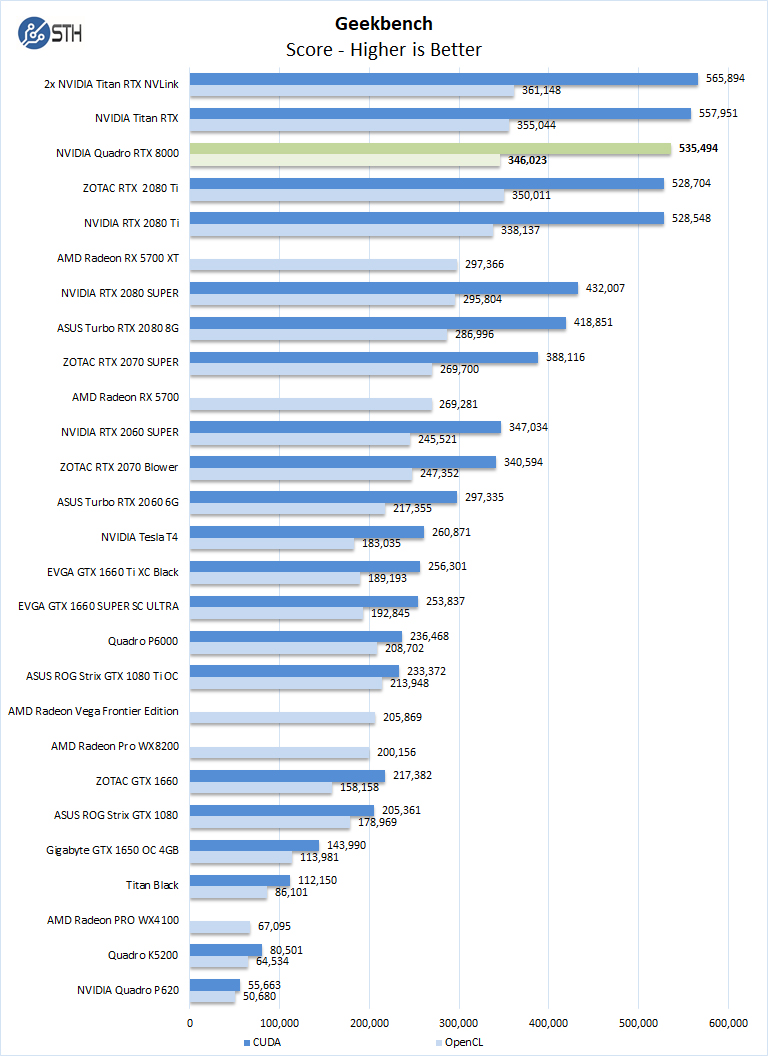
Our first compute benchmark we see the NVIDIA Quadro RTX 8000 achieves results close to the NVIDIA Titan RTX. There is a slight difference in numbers. Part of that can be ECC memory-related. Another part of that can be the impact of dual-fan Titan RTX coolers in a single GPU configuration. We will see this difference in other benchmarks as we progress.
LuxMark
LuxMark is an OpenCL benchmark tool based on LuxRender.
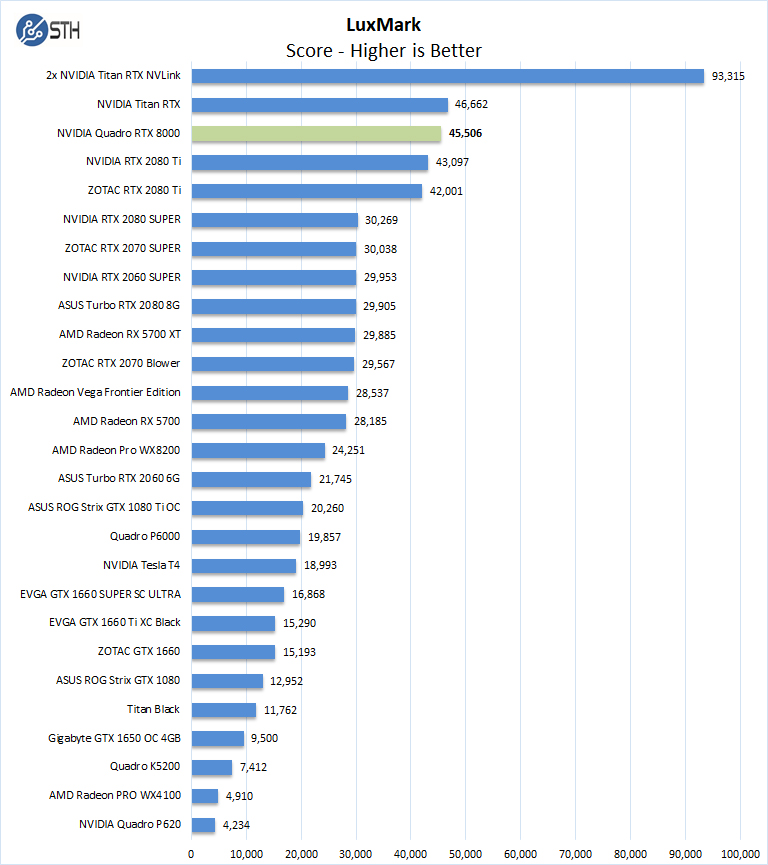
Like our Geekbench results, we find a slight difference between the Quadro RTX 8000 and Titan RTX.
AIDA64 GPGPU
These benchmarks are designed to measure GPGPU computing performance via different OpenCL workloads.
- Single-Precision FLOPS: Measures the classic MAD (Multiply-Addition) performance of the GPU, otherwise known as FLOPS (Floating-Point Operations Per Second), with single-precision (32-bit, “float”) floating-point data.
- Double-Precision FLOPS: Measures the classic MAD (Multiply-Addition) performance of the GPU, otherwise known as FLOPS (Floating-Point Operations Per Second), with double-precision (64-bit, “double”) floating-point data.
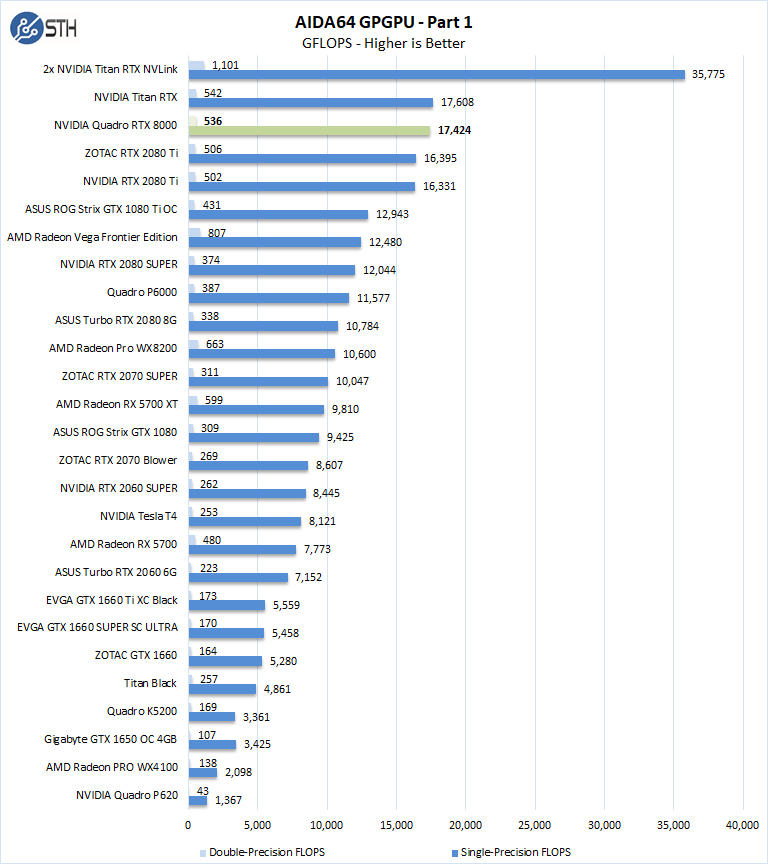
The next set of benchmarks from AIDA64 are:
- 24-bit Integer IOPS: Measures the classic MAD (Multiply-Addition) performance of the GPU, otherwise known as IOPS (Integer Operations Per Second), with 24-bit integer (“int24”) data. This particular data type defined in OpenCL on the basis that many GPUs are capable of executing int24 operations via their floating-point units.
- 32-bit Integer IOPS: Measures the classic MAD (Multiply-Addition) performance of the GPU, otherwise known as IOPS (Integer Operations Per Second), with 32-bit integer (“int”) data.
- 64-bit Integer IOPS: Measures the classic MAD (Multiply-Addition) performance of the GPU, otherwise known as IOPS (Integer Operations Per Second), with 64-bit integer (“long”) data. Most GPUs do not have dedicated execution resources for 64-bit integer operations, so instead, they emulate the 64-bit integer operations via existing 32-bit integer execution units.
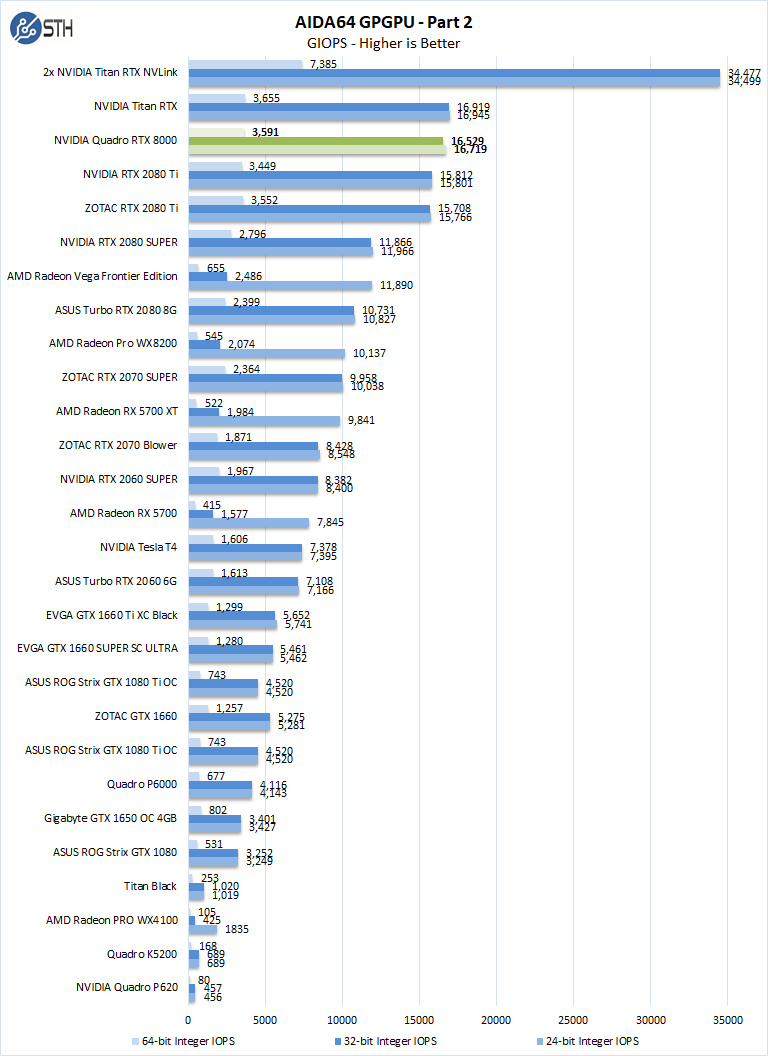
Here we can see compute is similar. This is despite the fact that we expect the Quadro RTX 8000 to be slightly faster.
hashcat64
hashcat64 is a password cracking benchmarks that can run an impressive number of different algorithms. We used the windows version and a simple command of hashcat64 -b. Out of these results we used five results to the graph. Users who are interested in hashcat can find the download here.
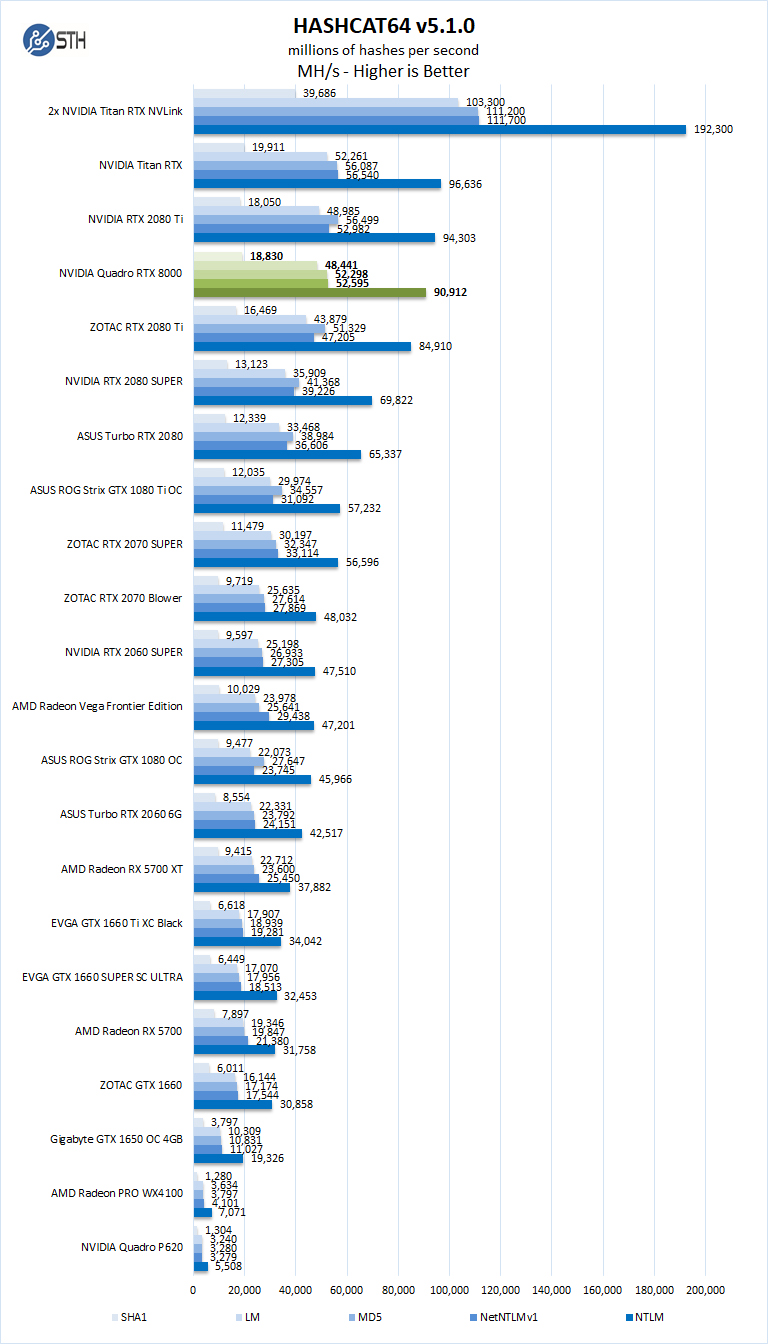
Hashcat can out a heavy load on GPU’s and here we see the dual-fan graphics cards have the edge in our results.
SPECviewperf 13
SPECviewperf 13 measures the 3D graphics performance of systems running under the OpenGL and Direct X application programming interfaces.
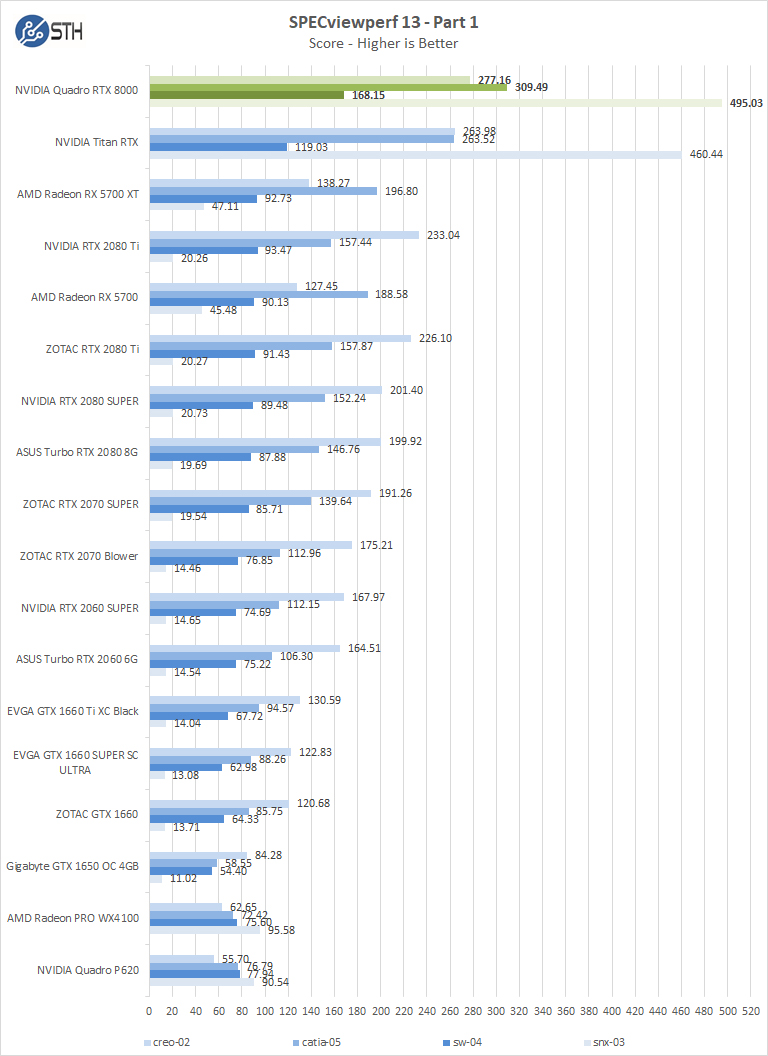
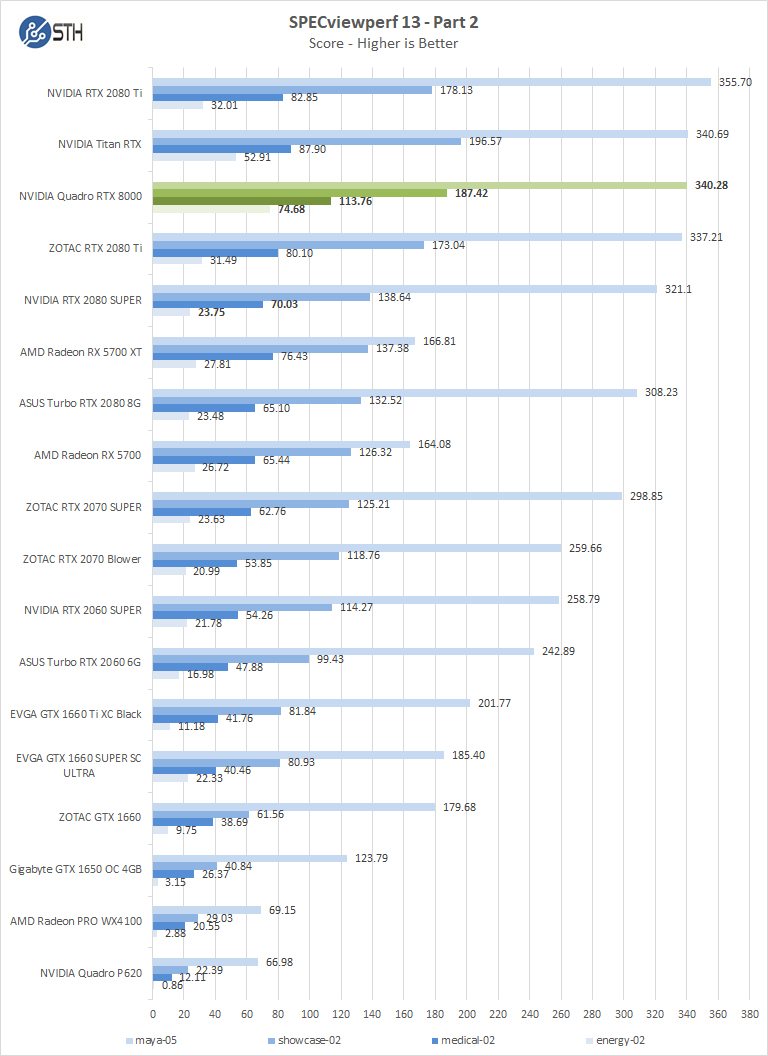
In SPECviewperf the Quadro RTX 8000 definitely wins across the board except for a few minor differences. If you look at many of the subtests, the Quadro RTX 8000 is an enormous upgrade to the Titan RTX.
Let us move on and start our new tests with rendering-related benchmarks.




I disagree with the closing statement, the real competition to this card when you don’t need the memory capacity but do need additional performance is a dual RTX5000 setup and not a single RTX6000. Other than that great article and overview of the RTX8000
For deep learning, or (most?) any machine learning, ECC RAM is unnecessary. 48GB is great though. The more the better.
What’s with the ‘stereo’ connector? Does this thing have an audio output too?
@zeta it’s for audio passthrough to a VR headset, same reason it has the USB-C connector on the back
Something appears to have gone wrong with the Octane benchmark. There is typically a really small difference between the 2080ti and the RTX 8000. Are we sure those are the correct results? :)
@Nejc The scene probably needs to address some out-of-core memory on 11GB VRAM cards which is not needed on RTX Titan & RTX 6000/8000
will this run fortnite?
Quadros would blow the doors off all these cards if they weren’t built for wait for it…. REDUNDANCY. Meaning ECC capabilities. Stop comparing Professional grade cards with basic consumer-grade cards. If you cannot comprehend what redundancy is or why it is needed on a Professional basis then you morons just need to learn to shut up. Quadros are not “gaming” cards. Idiots.